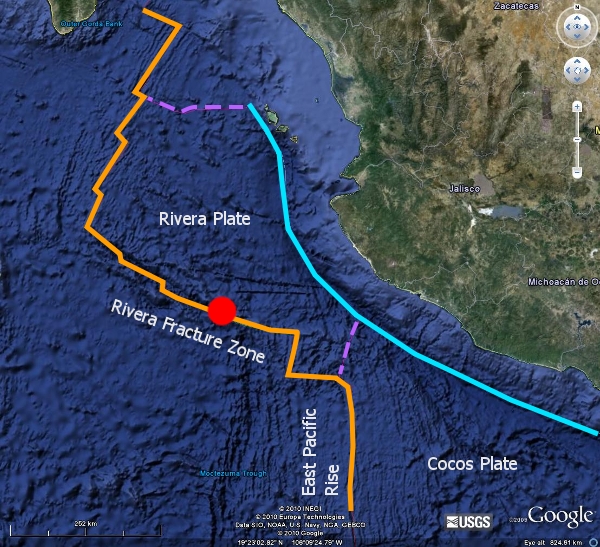![]() The earthquake that particularly caught my eye this week occurred on Tuesday off the coast of Mexico:
The earthquake that particularly caught my eye this week occurred on Tuesday off the coast of Mexico:
This focal mechanism is pure strike-slip: that is, it is the result of two sides of a fault moving laterally past each other, with no real compression or extension involved. A tectonic map of the area shows that it occured on the Rivera Fracture zone, a transform segment of the northern East Pacific Rise, just before it terminates in the Gulf of California. The dextral, or right-lateral sense of motion is consistent with the fracture zone being a tectonic link between different spreading segments of the ridge system, a concept that I have discussed before, regarding a similar earthquake in Iceland.
The other interesting thing about this area is that the East Pacific Rise is very close to the subduction boundary on the Mexican coast, and continuing eastward subduction means that the distance between them is shrinking all the (geological) time. The ridge segment at the eastern end of the Rivera Fracture zone is extremely close to being subducted, pretty much cutting off the section of oceanic crust to the northwest from the Cocos Plate to the southeast. In fact, deformation along the zones marked with the purple dotted lines mean that this area is effectively moving independently of the rest of the Cocos Plate, and can therefore be regarded as a separate plate: the Rivera Plate. This is what happens when a ridge gets subducted: large transform offsets eventually become the boundaries of little plates strung along the subduction zone, as the ridge segments that they originally linked to get subducted.





Nice plan for content warnings on Mastodon and the Fediverse. Now you need a Mastodon/Fediverse button on this blog.